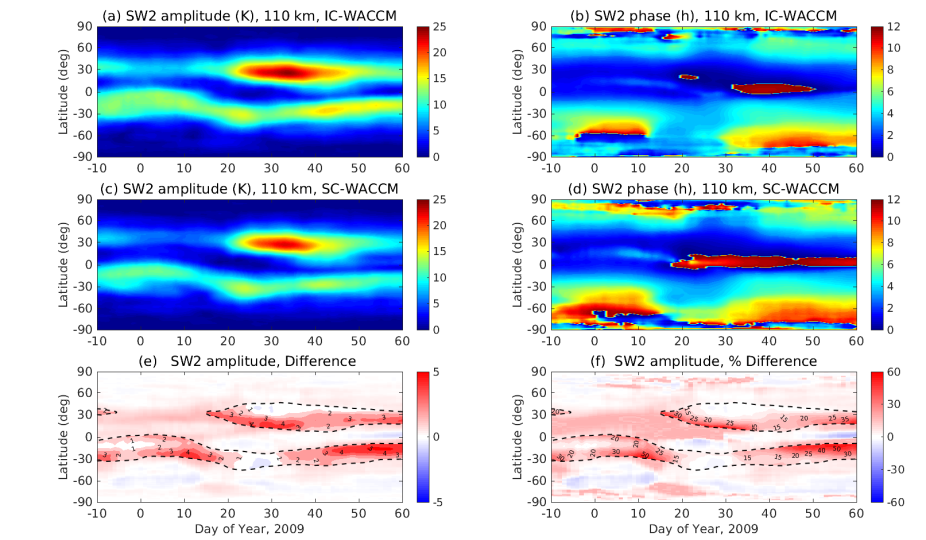Publication Name: Journal of Geophysical Research–Space Physics; First HAO Author's Name: Tarique Siddiqui
We use the CESM2-WACCM, to study the importance of ozone in the vertical coupling between lower and upper atmosphere during SSWs. During SSWs, the build-up of stratospheric ozone concentrations at tropical latitudes and its increased asymmetrical distribution carries the potential to affect the generation of migrating and non-migrating semidiurnal solar tides.

SW2 amplitude in neutral temperature at 110 km for (a) SD-WACCM, and © SC-WACCM. The corresponding SW2 phases are presented in (b) and (d). The difference and percentage difference of SW2 amplitudes between the two simulations are presented in (e) and (f), respectively. The dashed black line in (e) and (f) mark the region in which the SW2 tidal amplitudes from SD-WACCM exceed 10 K. Below this value, the difference and percentage difference values are shaded in white in (e) and (f), respectively.
Much of the upper atmospheric variability associated with SSWs is known to be driven by large changes in the vertically propagating semidiurnal migrating (SW2) and non-migrating (SW1 and SW3) solar tides. In this study, we investigate the effect of stratospheric ozone variability during SSWs on these solar tides. For this purpose, a case study of the 2009 SSW event is carried out using WACCM with two distinct simulation setups. In the first setup, the ozone concentrations are interactively calculated in the model and resemble the ozone observations during the 2009 SSW event while in the second setup, the ozone concentrations are specified using zonal mean values. We constrain both of the simulations to the MERRA-2 renanalysis so that the background atmosphere through which the solar tides propagate are almost identical in each case. Following the onset of the SSW, we find that in the vicinity of the peak enhancements of SW1, SW2 and SW3 in the MLT, the amplitudes of these semidiurnal solar tides to be approximately about 15-50% larger for the simulation with interactive ozone as compared to the one with prescribed ozone, indicating that the stratospheric ozone variability plays an important role in driving semidiurnal solar tidal changes during SSWs.